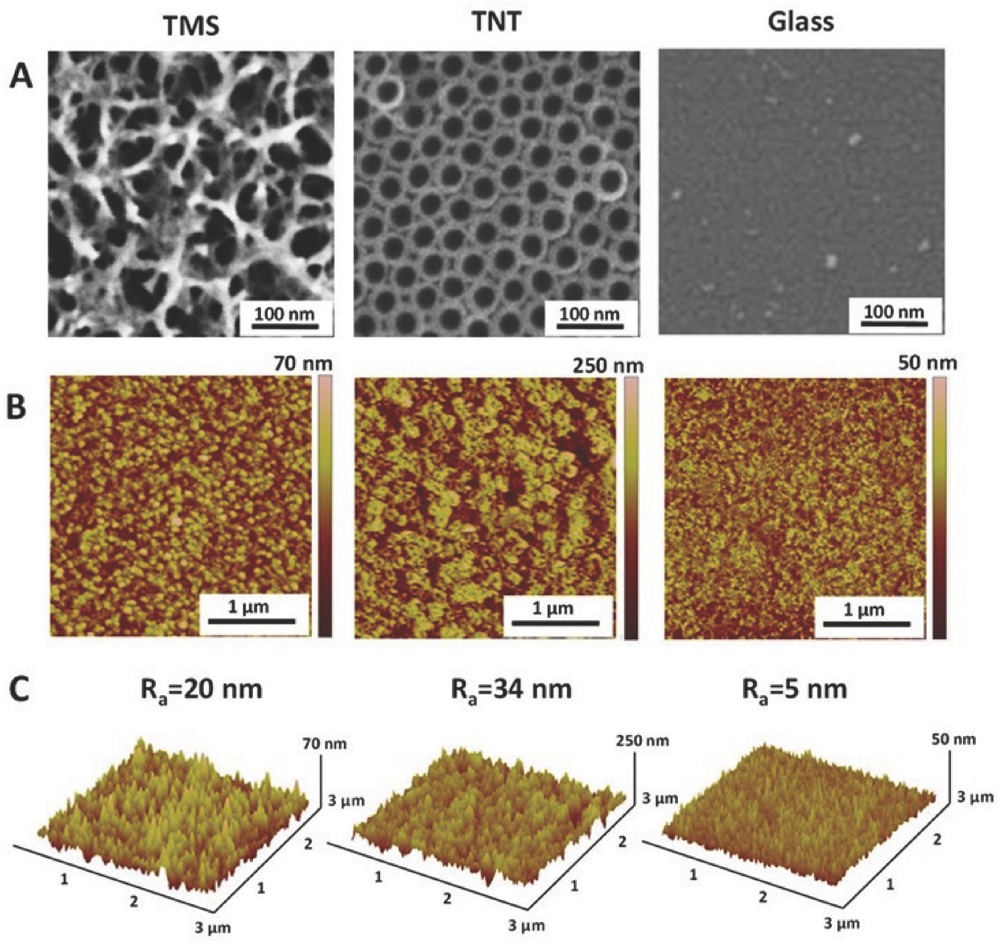Авторы: Yulia Zhukova, Christian Hiepen, Petra Knaus, Marc Osterland, Steffen Prohaska, John W. C. Dunlop, Peter Fratzl,

Advanced Healthcare Materials, 2017, 6 (15), pp 1601244 (1-13)
Abstract
Surface structuring of titanium-based implants is known to modulate the behavior of adherent cells, but the influence of different nanotopographies is poorly understood. The aim is to investigate preosteoblast proliferation, adhesion, morphology, and migration on surfaces with similar surface chemistry but distinct nanotopographical features. Sonochemical treatment and anodic oxidation are employed to fabricate disordered, mesoporous titania (TMS) and ordered titania nanotubular (TNT) topographies on titanium, respectively. Morphological evaluation reveals that cells are polygonal and well-spread on TMS, but display an elongated, fibroblast-like morphology on TNT surfaces, while they are much flatter on glass. Both nanostructured surfaces impair cell adhesion, but TMS is more favorable for cell growth due to its support of cell attachment and spreading in contrast to TNT. A quantitative wound healing assay in combination with live-cell imaging reveals that cell migration on TMS surfaces has a more collective character than on other surfaces, probably due to a closer proximity between neighboring migrating cells on TMS. The results indicate distinctly different cell adhesion and migration on ordered and disordered titania nanotopographies, providing important information that can be used in optimizing titanium-based scaffold design to foster bone tissue growth and repair while allowing for the encapsulation of drugs into porous titania layer.
DOI: 10.1002/adhm.201601244
Read Full: